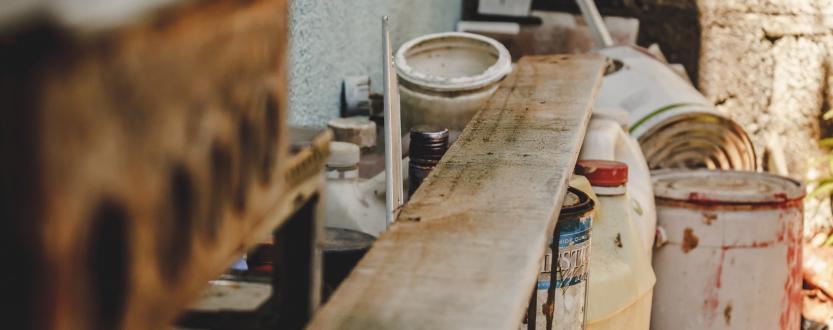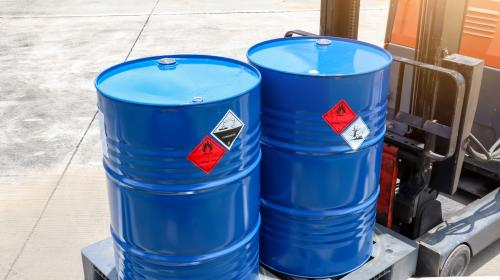If you haven’t read it yet, be sure to look back at last week’s post, “Handling Paints and Coatings Waste from Your Business: Part I.”
3 Steps for how my business should handle its hazardous paints and coatings waste:
Step 1: The first step in ensuring that your company is complying with RCRA rules is to make sure you know the wastes that are generated from your painting business. You must determine if each waste is hazardous or nonhazardous prior to disposal, so run tests to identify whether the waste solvents and paints are hazardous. Not sure where to start or how to go about testing your waste? Don’t risk being in noncompliance, since the fines for doing so are large and could do serious damage to your company’s image and bottom line. Consult experts at Enviro-Safe Resource Recovery since we have a knowledgeable and experienced staff of environmental professionals who can provide waste characterization, profiling and sampling. We also help you by properly documenting the evaluation process for your waste streams. Understanding the types of waste you generate can also help you decide whether to put into place better waste minimization efforts, or focus on partnering with a sustainable hazardous waste management company like Enviro-Safe to help you dispose of your waste properly.
Step 2: Knowing your waste can help you take a closer look at ways you can minimize your hazardous waste. Ultimately, minimizing pollution and preventing damage to the environment and human health (including your employees’ health) is the goal. You can also save money and reduce your regulatory burdens if you explore ways of preventing paint- and coatings-related waste. Start with the basics:
- The best way to reduce the amount of leftover paint you have is to purchase only the amount you need for a particular job
- Use latex paints to replace oil-based paints. This reduces the amount of hazardous sandblast residue because, unlike oil-based paints, most latex paint waste can be disposed of as non-hazardous waste
- Make arrangements to return un-opened, unused containers of paint to your vendor
- Reuse leftover paint for touch up work as a primer or undercoat
- Combine leftover paint with other compatible paints, re-tint it and use it
- Consider using high-solids paint, water-borne paint or powder coating or ultraviolet cure coatings, which has several environmental advantages including reducing emissions. Replacing toxic adhesives and coatings with less hazardous products, such as low volatile organic compound (VOC) paint, adhesives, joint compounds, and sealants helps the environment and can save you money
- Prepare smaller test batches of coatings.
- Cover coating containers to prevent product evaporation.
- Arrange painting schedules to reduce wastes from cleaning equipment between tasks, shifts, or color changes.
The EPA’s Toxic Release Inventory (TRI) indicated releases by the paints and coatings sector decreased by 81 percent between 1990 and 2014, in part because of waste minimization actions like these. Learn more about the environmental impact of minimization from the American Coatings Association website.
Step 3: Once you have learned what materials are hazardous and performed as much minimization as possible, you may still generate some amount of hazardous waste. This must be sent to a permitted hazardous waste facility for disposal and it is illegal for it to be thrown in the dumpster, on the ground or put down a septic system. Start by reading our tips on choosing a responsible recycler for your business. At Enviro-Safe, we own and operate our own processing and recycling facility, as well as our own transportation fleet to manage your hazardous waste as cost-effectively and efficiently as possible. Our six-acre parcel operations include solid waste storage capabilities, recycling and bulk processing, a 10-day hazardous waste storage license and more. Depending on the quality and volume of your waste material, it may qualify “as is” without further treatment, as a product in lieu of a hazardous waste, thus reducing the amount of hazardous waste generated and managed by your company.
Contact Enviro-Safe today to get started or for a quote or tour of our facility.



